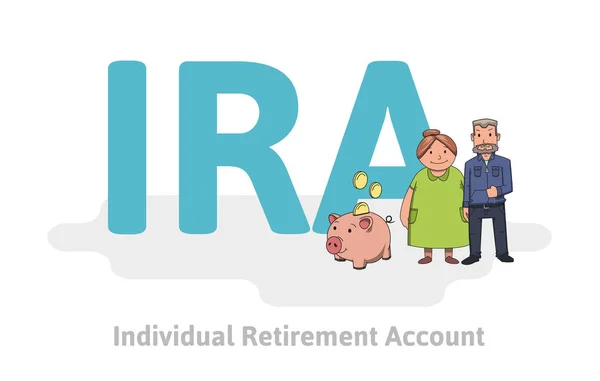Highlights
- Simple IRA allows employers and employees to allocate funds for retirement accounts.
- SEP IRA only allows employer contributions of up to 25% of salary or $66,000 annually.
- Simple IRA has lower employee contribution limits than SEP IRA’s higher employer contribution limits.
- SEP IRA offers flexibility in employer contributions year-to-year, unlike Simple IRA’s consistent contributions.
- Simple IRAs are easier to set up and the best choice for small businesses with 100 or fewer employees.
When it comes to retirement savings plans for small business owners or self-employed individuals, the Simple IRA vs SEP IRA debate is common. Both offer great tax benefits and help you save for the future, but choosing the right one depends on your business size, goals, and financial situation.
In this blog, we’ll break down the key differences between a Simple IRA and a SEP IRA, explore the benefits of each, and help you decide which one suits your needs best.
What is a Simple IRA?
A Simple IRA (Savings Incentive Match Plan for Employees) allows employers and employees to contribute to individual retirement accounts. Small businesses often use it with 100 or fewer employees. Simple IRAs are designed to be easy to set up and manage, with minimal paperwork.
Key Features:
- Employer Contribution: Employers can match employee contributions dollar-for-dollar up to 3% of their salary or contribute a fixed 2%, even if the employee doesn’t contribute.
- Employee Contribution: Employees can contribute up to $15,500 annually (as of 2024), with an additional catch-up contribution of $3,500 for those aged 50 or older.
- Tax Benefits: Employee contributions are tax-deferred, meaning you don’t pay taxes until you withdraw the money during retirement.
What is a SEP IRA?
A SEP IRA (Simplified Employee Pension) is another retirement plan for small businesses and self-employed people. This plan is often chosen by employers who want flexibility in how much they contribute to their employee’s retirement funds.
Key Features:
- Employer Contribution: Only employers contribute to a SEP IRA, which can be as much as 25% of the employee’s compensation, up to a maximum of $66,000 (as of 2024).
- Employee Contribution: Employees cannot contribute to SEP IRAs. The employer makes all the contributions.
- Tax Benefits: Like the Simple IRA, contributions to SEP IRAs are tax-deferred, providing a tax break when the funds are deposited.
Key Difference Between SEP IRA and Simple IRA
Now that we understand the basics of both plans let’s explore the key difference between SEP IRA and Simple IRA.
- Employer and Employee Contributions: With a Simple IRA, employers and employees can contribute to the retirement account. However, only the employer is allowed to contribute to a SEP IRA.
- Contribution Limits: A Simple IRA has lower employee contribution limits, capping $15,500 annually. For SEP IRAs, employers can contribute significantly more, up to $66,000 or 25% of the employee’s salary, whichever is less.
- Flexibility for Employers: Employers using a SEP IRA can vary their contributions year-to-year. In a Simple real estate IRA, employers can make contributions yearly through matching or fixed contributions.
- Ease of Setup: Both plans are relatively easy to set up. However, the Simple IRA may be slightly simpler to administer due to its lower contribution limits and the ability for employees to participate.
Benefits of Simple IRA vs SEP IRA
Choosing between a Simple IRA vs SEP IRA depends on what you’re looking for in a retirement plan. Here are the benefits of each option.
Benefits of a Simple IRA:

- Easy for Small Businesses: Simple IRAs are great for businesses with fewer than 100 employees. The setup process is straightforward; employers only need to file a few forms.
- Employee Participation: Simple IRAs allow employees to contribute to their retirement savings, making it a great option for companies offering an attractive retirement benefit.
- Low Cost: Simple IRAs don’t require employers to make large contributions unless they choose to do so through matching.
Benefits of a SEP IRA:

- High Contribution Limits: One of the biggest advantages of a SEP IRA is the higher contribution limit. Employers can save a larger portion of their income in this retirement account.
- Flexible Contributions: Employers can decide how much they want to contribute yearly. If the business has a tough financial year, it can lower or skip contributions without penalties.
- Self-Employed Friendly: A SEP IRA is ideal for self-employed people who want to save more for retirement without worrying about matching employee contributions.
At Blackstone Commodity Group, we make diversifying your investment portfolio with precious metals secure, offering the best Gold IRA solutions to fit your needs. We also specialize in self-directed IRAs, allowing you to manage your retirement funds while benefiting from competitive pricing and real-time market analysis.
Which One Should You Choose: Simple IRA vs SEP IRA?
When choosing between a Simple IRA vs SEP IRA, there are several factors to consider. Here are some key questions to ask yourself:
- How Many Employees Do You Have?
If you’re a self-employed individual or run a very small business with no employees, a SEP IRA might be the better choice due to its higher contribution limits. However, a Simple IRA is likely the better option if you have a small team of employees who want to contribute to their retirement.
- Do You Want Flexibility in Contributions?
A SEP IRA allows you to contribute large amounts in good financial years and scale back in tougher years. On the other hand, a Simple IRA requires consistent employer contributions, either through matching or fixed contributions.
- What’s Your Budget for Employer Contributions?
A Simple IRA requires smaller employer contributions. This makes it ideal for businesses that want to offer a retirement plan without overextending their budget. A SEP IRA, while flexible, can require higher employer contributions depending on the employee’s salary.
- How Much Do You Want to Contribute as an Employee?
With a Simple IRA, employees can contribute their earnings to the account, helping them grow their retirement savings. SEP IRAs don’t allow employee contributions, so if you’re an employee looking to invest more, a Simple IRA may be a better fit.
Summary
Deciding between a Simple IRA vs SEP IRA depends on your business needs, the number of employees, and how much flexibility you want in contributions. Both options offer excellent tax benefits and help you secure your financial future. If you’re looking for a low-cost option with employee involvement, a Simple IRA might be right for you. On the other hand, if you want higher contribution limits and more flexibility, a SEP IRA could be the better choice.
Disclaimer
The content provided on this blog is for informational and educational purposes only and does not constitute financial or investment advice. While we strive to provide accurate and up-to-date information, you should not rely on this content as a substitute for professional financial advice. Any financial decisions you make are done so at your own risk, and we encourage you to consult with a licensed financial advisor before making any investment decisions.
The views and opinions expressed in this blog are solely those of the authors and do not necessarily reflect the views of any affiliated entities. The information presented here is not intended as a solicitation or recommendation to buy, sell, or hold any financial product.


